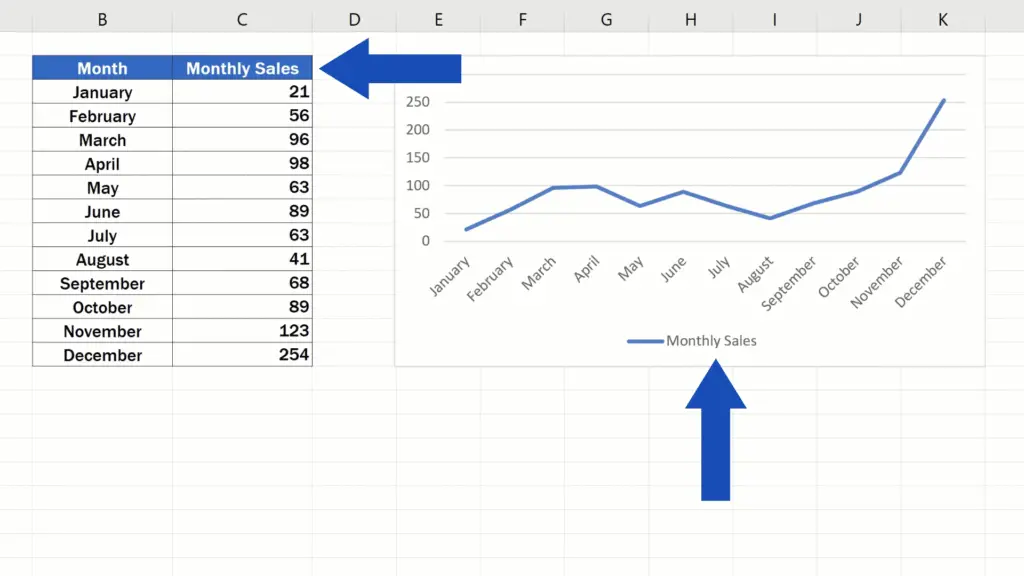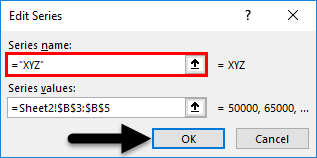
The Axes tab gives you the choice to show

#CHANGE TEXT IN EXCEL LEGEND SERIES#
The Series (Y) axis box, write: Categories. The Chart title box, write: Revenues by Categories. Text that will appear to the main title of the chart as well asįor the descriptions of each of the axes of the chart. The tab of the titles serves for writing the Your selection and press the Next button.įor the third step, there are several tabs. You need to place a semi-colon ( ) between the text For example, orders could come from "In store" "Catalogue" "Internet". You just need to press the button at the end of the box and select The "Category (X) axis labels" box indicates the description that will be shown The "Values" box is an area of cells that contain the numbers you want to see in the chart for that data series. The file or you can write the text of your choice. YouĬan select the content of a cell of one of the worksheets of It's that name that will appear in the legend of the chart. Side, the "Name" box allows you to change the name of a series. Of the window, you have the name of each of the series. Under the Series tab, you may change, add or delete data series. You also have a preview of the final chart before having finished it! YouĬan experiment and see that will be the final result by changing the That means that every row from the range of cells you selected will be a data series. For the purpose of this exercise, make sure that theĭata series are in rows and not in columns. Or every column represent a data series on an item that you want to The data series are in columns or in rows. There is an error, you can always press the button at the end of theīox to re-select the cells you need for the chart. You chose the right area of cells as the data series of your chart. The Data range tab is there to make sure that One to determine the range of data (Data range) and the other to look of the data series. For the exercise, select from the Column charts, the 3-D Column option.įor the second step to create a chart has two tabs: the You can try different types of charts before going any further and preview them. The section with the subcategories of chart will be replacedīy a representation of the chart. To View Sample" to have a preview of the chart. Make sure to have chosen the right type of chart to better to represent the Of the same height, only the proportion of each series changes.īefore continuing, you may have a preview of the chart to In cumulative mode (one on top of the other). Furthermore, the first column shows the data series the The second row shows these same data but in threeĭimensions (3D). The first row shows the data in twoĭimensions (2D).

These subcategories are alike, but will give a different representationįrom the same data.
:max_bytes(150000):strip_icc()/LegendGraph-5bd8ca40c9e77c00516ceec0.jpg)
Right part of the screen, there are subcategories to represent The first stage consists in choosing a chartįrom the 14 categories that are represented in the left column.

The questions that you will be shown in the next windows. Use Excel's chart assistant by pressing the button. The Insert menu, select the Chart option. But, Excel will be confused if the description that you need for the X axis are numbers. The content of the first column from the range of cells will be used as the description for the legend of the chart. Generally, the first row or row selected from the range of cells will be used by the chart for the description Don't take single cells scattered everywhere on your worksheet. Make sure that every range of cells selected represents at least a data series for the chart. Use the instructions in the Basic operations page to select only the blocks of cells that you need. They will be added to the chart and leave empty spots in your chart. The data by using a block (continuous or non-continuous), for the exercise, The following data in the appropriate cells. This exercise consists in creating a "3D Column chart" on a new worksheet. Quickly analyze the trends in data series.Īnalyze proportions among different data series.


 0 kommentar(er)
0 kommentar(er)
